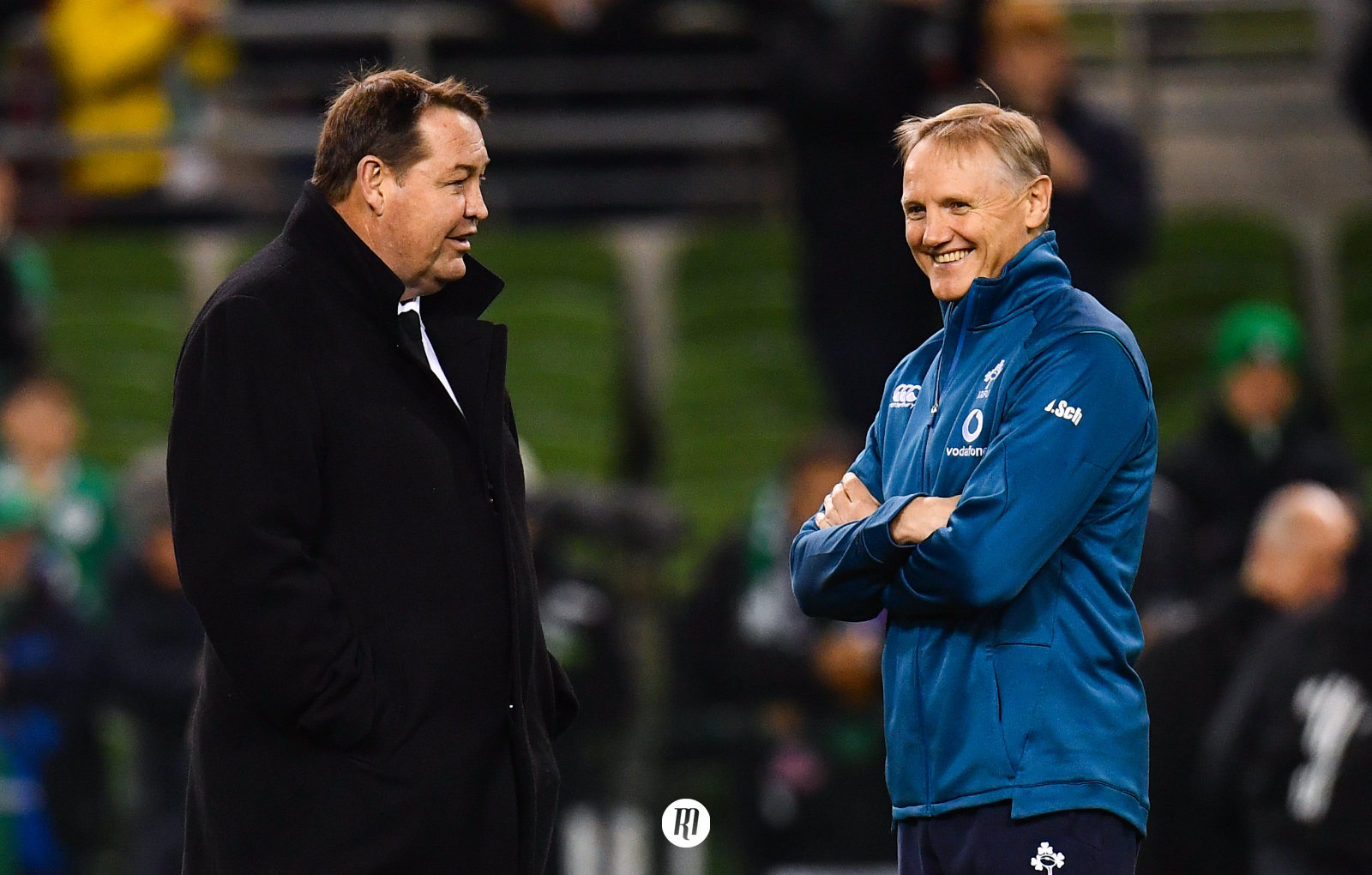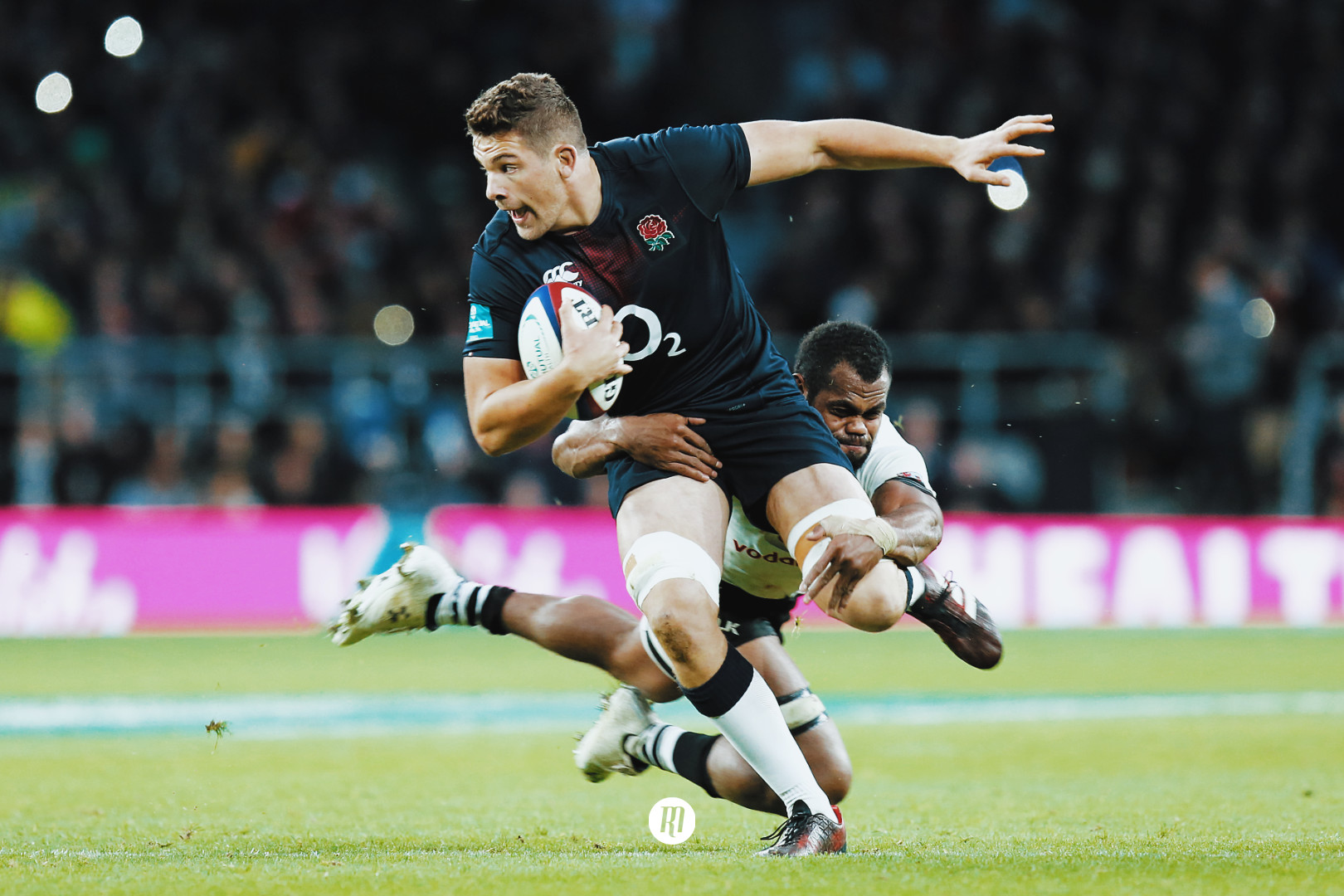Schmidt's Blueprint: How to get to number one
Ireland took the game to New Zealand and were duly rewarded, but the victory lies on a foundation of incredible hard work, and the tactical genius of the man in charge.
Dublin played host to one of the greatest shows on earth on Saturday. Whilst England toiled and fell to defeat at the hands of the world's best a week prior, the story was so different for the Northern Hemisphere's undisputed champions. And while the results were inherently different for both nations, England and Ireland's performances have combined to show exactly how to taste victory against the All Blacks.
As obvious as it may sound, protecting the ball is the foundation to not allowing New Zealand to find a rhythm. That aspect of it can be broken down into three elements, firstly, the set piece. Ireland and the visitors were consistent at scrum time, securing all of their own possession, both effective and dominant as the other. With neither side willing to concede, equal importance for the Irish was to transfer that consistency into the line out. Where England failed dismally the week prior, winning only 66% of their own ball, Ireland were fundamentally better. While an 84% success rate is far from perfect, the first 11 of Irelands 13 throws were found by green hands, by the time Ireland lost their first line out, they’d already amassed a 7 point lead. Only when the hosts failed to secure their own ball, their twelfth and thirteenth line out, deep into the second half, did they have New Zealand knocking at their door.
Within three minutes of Ireland losing that first put in, the home side had went from having a line out on the All Black 5m line, to defending inside their own 22. One moment of inaccuracy almost cost Ireland 7 points, and might have done if it wasn’t for some godlike intervention from Peter O’Mahony on the Irish try line. The importance of accuracy and consistency at the set piece not only starved New Zealand of the counter attacking opportunities they are staggeringly effective at, but it allows the opposition to dictate the style, speed and area in which the game is played; the next stage to managing New Zealand in the open field.
England approached the game a week prior with a mandate to kick, at least, if that wasn’t Eddie Jones plan it quickly descended into a territorial battle in the skies. A total of 75 kicks from hand in the game at Twickenham were shared almost evenly between England and the All Blacks, but the major difference between Ireland's 30 and England's 37 from the previous Saturday, were the areas in which both teams dispatched the ball. England were happy to kick from inside their own 22 and look to give New Zealand the ball deep in their own half, or box kick inside their own 50 and give Ashton & May the opportunity to secure and build more predictable phases.
It didn’t work.
If Johnny Sexton watched tape of the All Blacks one point triumph, then he put what England didn’t do well with the boot to good use. Kicking from hand in the New Zealand 22 twice resulted in a Irish ball, the first as Beauden Barrett was stuffed into touch for a 5m line out, the second a try, the deft boot of Stockdale receiving his own kick following a seamless training ground shape from the Irish.
That was just a small part of Irish dominance kicking out of hand in all areas of the pitch, one thing the Irish didn’t do, was repeat the same tactic of giving the ball back to New Zealand in similar areas. Instead of giving the All Blacks ball with time to think and space to run into, the men in green forced them to rush, and at times, panic. Ireland didn’t simply kick their way to victory, all of the home sides attacking play was developmental, from a 10 phase drive down a 15m channel in the centre of the park where Johnny Sexton was the only recognised back, to the fluid and almost timeless piece of attacking play that led to the only try of the game; no two phases of possession the same, there was no predictable theme or overall tactic, and it was crushingly successful.
The final piece in the how to beat the All Blacks jigsaw, wasn’t so much a tactic, but a by-product of getting the set piece and attacking directive precise. When any team can secure their own ball and be more productive in attack, it generally leads to more possession and more territory. This was the case in Dublin. Ireland had 53% of both, and whilst that may seem a little tight, the final twenty minutes saw New Zealand have over 65% of possession and territory, slightly shadowing what was a dominant show from the Irish. The defensive effort from Ireland was also monumental, it’s hard not to focus on the fact the Irish stopped a team that on average scores over 5 tries a game from scoring 1, or James Ryan and Josh van der Flier’s combined 36 tackles.
However, Ireland's defence didn’t win the day, far from it. England’s failings last week, having 50% more attempted tackles than the All Blacks highlights just how right Joe Schmidt got it, his side forcing the world champions to defend for longer periods and a higher tackle count, 188 to Irelands 176. By having more of the ball, Ireland defended less, and when you’re not defending, you don’t allow your opposition the time to develop their attacking rhythms.
This resulted in multiple rare lapses, Barrett was missing a beat, not able to dictate in the tightest of spaces like he normally does. Damien MacKenzie suddenly wasn’t able to cut through spaces that didn’t appear to be there. Savea and Read weren’t punishing with the ball in hand. Suddenly, the All Blacks were reactively falling apart, Ireland forced the most confident and composed side in sporting history to begin making amateur level mistakes.
When was the last time you saw an All Black back row waste a dangerous attacking position by grubber kicking a ball to give the opposition a drop out? Or Beauden Barrett throwing a loose pass to Read, to then throw it to the ground mere inches from their own try line? What about the multiple turnovers, handling errors? It just doesn't happen like that for New Zealand.
Where England came so close, their inaccuracy at the line out, the 48 missed tackles and 37% territory deprived them of a realistic chance at victory. To say it was an off night for the number one team in world rugby would not only be unfair to Ireland, it would be wrong. New Zealand don’t have off nights, it’s not in their countries rugby DNA, Ireland simply asked the All Blacks too many difficult questions, and time and time again they didn’t have an answer. Where England got it wrong, Ireland got it so, so right.
The beauty of Ireland's victory came in their approach, whilst every tier 1 side for the last decade have prepared in the run up to the game with the mantra of how do you contain the beast, Ireland instead decided to focus on their own game, deprive New Zealand of the ball they’ve become so accustomed too, and floor the All Blacks with fluid attack, consistent play in the breakdown and accuracy at the set piece.
It was beginning to look like the All Blacks were invincible, but for the first time in a decade, thanks to Schmidt and his blueprint for success, they have more questions than answers.

Filed under:
International, Ireland, New Zealand
Written by: Morgan Lowrie
Follow: @MorganLowrie · @therugbymag




